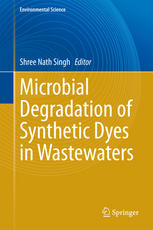

Most ebook files are in PDF format, so you can easily read them using various software such as Foxit Reader or directly on the Google Chrome browser.
Some ebook files are released by publishers in other formats such as .awz, .mobi, .epub, .fb2, etc. You may need to install specific software to read these formats on mobile/PC, such as Calibre.
Please read the tutorial at this link: https://ebookbell.com/faq
We offer FREE conversion to the popular formats you request; however, this may take some time. Therefore, right after payment, please email us, and we will try to provide the service as quickly as possible.
For some exceptional file formats or broken links (if any), please refrain from opening any disputes. Instead, email us first, and we will try to assist within a maximum of 6 hours.
EbookBell Team

4.8
84 reviewsToday synthetic dyes are used extensively in the textile dyeing, paper printing, color photography, pharmaceuticals, food and drink, cosmetic and leather industries. As of now, over 100,000 different dyes are available, with an annual production of over 700,000 metric tons. These industries discharge an enormous amount of colored effluents into natural water bodies, with or without treatment. The textile industry alone discharges 280,000 tons of dyes every year, making it the largest contributor to colored effluent discharge.
Although a variety of treatment technologies are available, including adsorption, chemical oxidation, precipitation, coagulation, filtration electrolysis and photodegradation, biological and microbiological methods employing activated sludge, pure cultures, microbial consortia and degradative enzymes are economically viable, effective and environmentally responsible options. As such, this book gathers review articles from international experts working on the microbial degradation of synthetic dyes, offering readers the latest information on the subject. It is intended as a quick reference guide for academics, scientists and industrialists around the world.